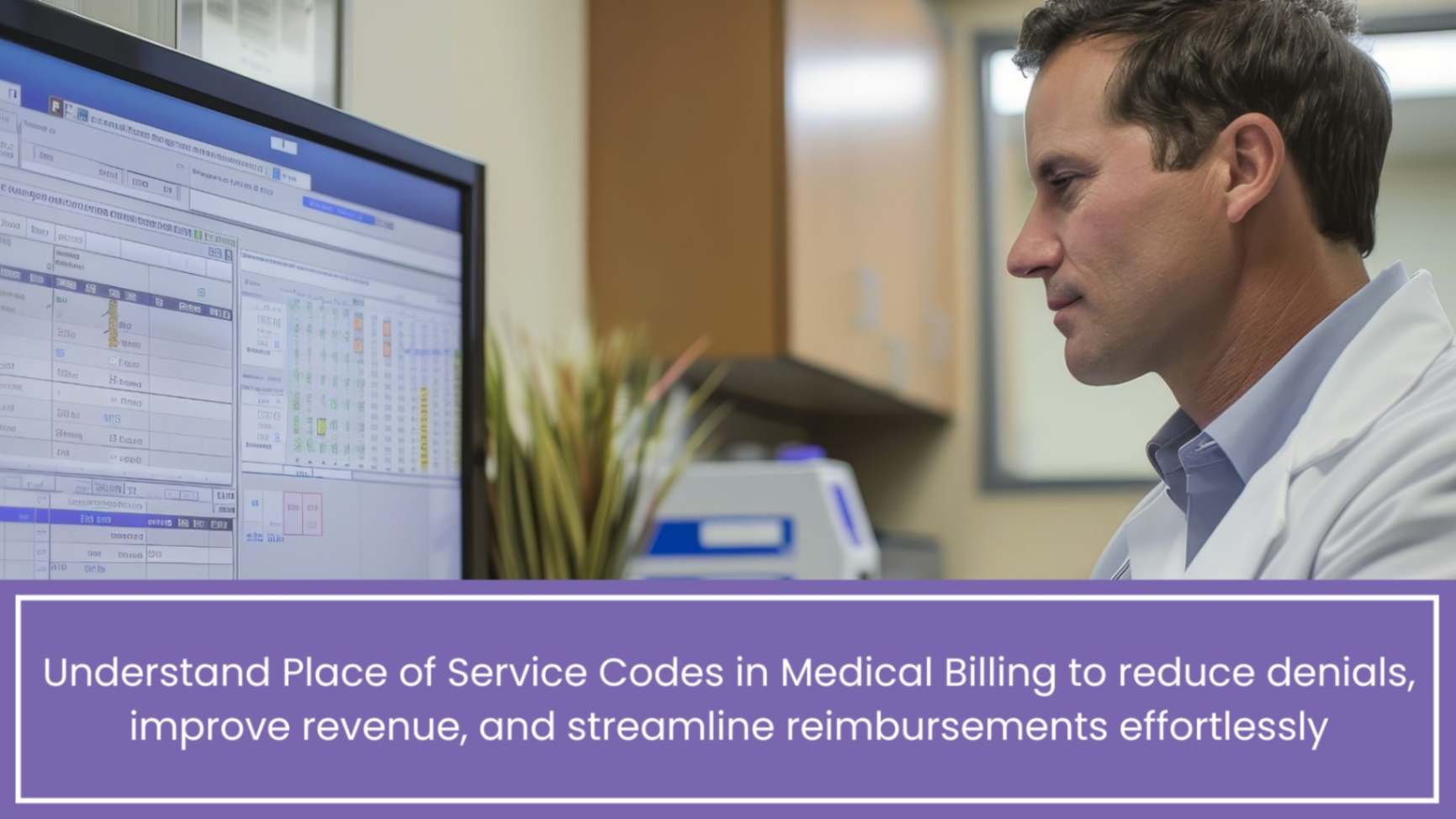Telehealth Billing Guidelines for Orthopedics
The healthcare industry has changed dramatically. Telehealth has become a potent instrument for providing care from a distance. Telehealth billing guidelines for orthopedics offers orthopedic offices numerous benefits. These include increased patient access, reduced no-show rates, and improved efficiency. Orthopedic telemedicine has potential advantages. However, there are also particular difficulties. There are various difficulties with orthopedic telehealth billing. The necessity of accuracy, continual learning, and attentiveness in adjusting to changing regulations are some of these difficulties.
Telemedicine is no longer a temporary solution for public health emergencies. It has become a permanent fixture in healthcare. Initial consultations and follow-up appointments are now part of seamless orthopedic care. Remote monitoring and physical therapy advice are also included. The clinical advantages of these treatments are clear. However, financial stability depends on ensuring they are billed and reimbursed correctly.
To assist your orthopedic practice, let’s discuss the fundamental telehealth billing rules. These rules are crucial for success in the digital era.
Table of Contents
Understanding Telehealth Service Types:
Telehealth offers various forms. Each form has its own set of billing regulations. It is crucial to understand the differences. Before diving into codes and modifiers, it is important to understand these differences.
- The most popular type of telemedicine is synchronous telehealth. Doctors and patients can have live, interactive talks because to synchronous telemedicine. Both audio and video can be used for these discussions. Consider it a virtual visit to the office. This is often the most straightforward to bill for, resembling in-person E/M (Evaluation and Management) services.
- Asynchronous telehealth is a process of sending recorded health data to a clinician for later evaluation. This procedure is called store-and-forward. It involves transmitting pictures, videos, or medical data. The practitioner gives a diagnosis, a course of therapy, or advice without speaking with the patient directly. This practice is inappropriate. This is done without real-time interaction with the patient. Orthopedic practitioners may use MRI or X-rays sent by patients. They can review these images to assess patient conditions.
- Telehealth that is audio-only is a type of telehealth that uses phone calls. It does not include video. The visual nature of the specialty makes it less popular for initial orthopedic exams. There are restrictions on how much these therapies cost. They could still be useful, though, for brief follow-ups or check-ins.
- In order to monitor patients remotely, technology is used. It collects patient health information. This data collection occurs outside of traditional clinical settings. This process is known as Remote Patient Monitoring. Orthopedic care often involves monitoring gait. It also includes measuring activity levels after surgery and evaluating physical therapy compliance.
Eligible providers, originating sites, and distant sites for telehealth services have specific regulations. These regulations also apply to coding and modifier criteria for each telehealth service category.
Key Billing Components for Orthopedic Telehealth:
To ensure compliant billing for your orthopedic telehealth services, pay close attention to these critical components:
1.E/M Services CPT codes are used for synchronous telehealth visits. These codes are typically used for visits that resemble in-person office visits.
- 99201-99205 for new patients
- 99211-99215 for established patients
Medicare has stated it does not recognize the new E/M codes for telehealth services. Conventional E/M codes 9920x and 9921x are still advised. Proper telehealth modifiers should be used with these codes. 2025 refers to a specific time period. As of early 2025, the AMA CPT codebook now includes new E/M codes that are particular to telehealth, such 98000-98015. It’s important to find out the coding methods each payer prefers. Each payer, including Medicare, Medicaid, and commercial insurers, has different coding requirements. Some private payers may follow Medicare’s example. Others may choose to use the new AMA codes.
2.Modifiers: The Essential Add-ons Modifiers are two-digit codes appended to CPT codes to provide additional information about the service rendered. For telehealth, these are indispensable:
- Modifier 95 (Synchronous Telemedicine Service): This is widely used for services provided via real-time audio and visual telecommunication systems. It indicates that the service was performed via telehealth.
- Modifier GT (Via Interactive Audio and Video Telecommunications System): While less common than 95 for most services, some payers (especially Medicare in the past for specific circumstances) may still require GT for synchronous services. Always verify with the payer.
- For audio-only telehealth services, the modifier FQ (Audio-only Telehealth) is utilized. The application and eligibility for payment vary depending on the payer and service type. The application and eligibility for payment differ greatly.
- Place of service codes indicate the location of a service. These codes are used to specify where the service is provided.
- Telehealth services are available outside of the patient’s home. This service is referred to as “Provision of Telehealth.” The patient is not at home. They are at a clinic or another facility.
- POS 10: Telehealth Provided in Patient’s Home. This code indicates the patient is receiving services at their home.
- Some payers, particularly during the PHE, allowed providers to continue using POS 11 (Office) to reflect where the service would have been provided in-person, along with a telehealth modifier. However, this flexibility is increasingly being phased out, and using POS 02 or 10 is becoming the norm. Always confirm the specific payer’s requirement.
3.The King (or Queen!) of documentation: Telehealth services require thorough and precise documentation, just like face-to-face consultations. This ensures accurate records and facilitates effective communication.
- Medical Need: Clearly state why the telehealth visit is necessary from a medical standpoint. For this patient and their situation, why was a virtual visit appropriate?
- Patient consent is documented. The patient (or legal guardian) provided informed consent for telehealth services.
- Specify the audiovisual platform used for the meeting. For example, secure video conferencing platform. The platform complied with HIPAA regulations.
- Remotely performed E/M services require all required documentation components: chief complaint, history, examination, medical decision-making, evaluation, and plan. These components must support the level of service paid. For orthopedics, this might include documenting the virtual range of motion assessment or visual inspection.
- Time-Based Coding: Record time spent and tasks completed. This information is needed for billing purposes.
Orthopedic Specific Considerations:
Telehealth offers opportunities in orthopedics. In the field, it also poses difficulties. Many components of advanced surgical procedures can be provided online. However, in-person care is still required.
- Routine post-operative examinations and wound care assessments are made possible using telehealth. Additionally, it makes it easier for patients to ask questions without having to visit in person.
- Initial virtual consultations can help triage patients. They can determine if an in-person visit is needed. They can discuss conservative management techniques. Ailments can be treated with these methods. Back discomfort, general pain, and mild arthritis are among the ailments they can aid with.
- Orthopedic physical therapists can lead patients through exercises. They can also evaluate their progress virtually. Telehealth modifiers can be used with specific CPT codes for therapy services. For instance, 97110 for therapeutic exercise. However, payer regulations for these modifiers vary greatly.
- A patient’s activity, development, and adherence to treatment recommendations can all be tracked with remote patient monitoring services. This surveillance is particularly beneficial following surgery or an injury. Readmissions and problems may be avoided in this way. These frequently include specific HCPCS codes. Included are the codes 99453 and 99454. The group includes them.
Keeping Up with Compliance in a Changing Settings:
The telehealth landscape is constantly evolving. CMS, state Medicaid programs, and private payer regulations are always changing. Tomorrow, what was acceptable last month might not be. Here’s how to stay on top:
- Payer websites are the primary source of information. Save your major payer’s telehealth policies to your bookmarks for easy reference.
- Sign up for Industry Updates to stay informed about CMS pronouncements. You can stay up-to-date on professional associations. You can also stay up-to-date on reliable healthcare billing news sources.
- Invest in staff training. Ensure your physicians receive continual training. Continual training should also include billing staff on telehealth coding, modifiers, and documentation.
- Perform internal audits of your telehealth claims. This will help you spot errors or non-compliance concerns. It will help you avoid serious difficulties.
- Telehealth parity laws and regulations differ from state to state. Recognize these differences. Knowing these differences is essential. It is essential if your clinic serves patients in different states or operates across state lines.
Conclusion:
Orthopedic care is being revolutionized by telehealth. It offers patients hitherto unheard-of levels of convenience and accessibility. Integration of telehealth necessitates a deep comprehension of billing laws. This understanding is essential for successful practice operations. Orthopedic offices can successfully navigate the digital landscape. They can do this by emphasizing thorough documentation. They can also keep up with changing codes and modifiers, and fund ongoing staff training. They can also utilize technology. This proactive strategy guarantees compliance billing and maximizes reimbursement. It frees up your team to concentrate on customized treatment.
ALSO READ – Simplifying Revenue Management: How Medical Billing Services Empower Small Practices
Talk to Medical Billing Expert Today — Get a Free Demo Now!






